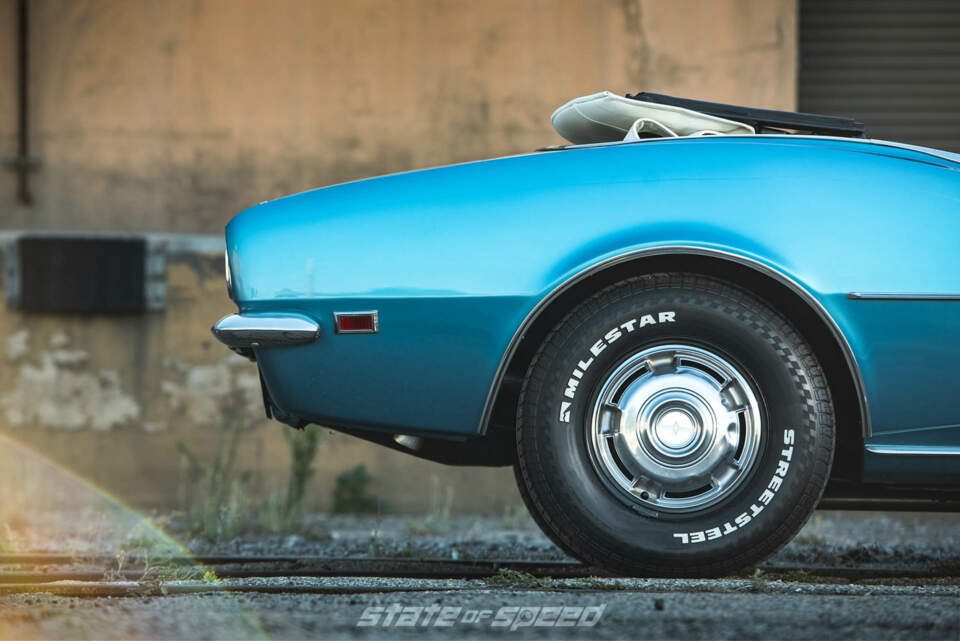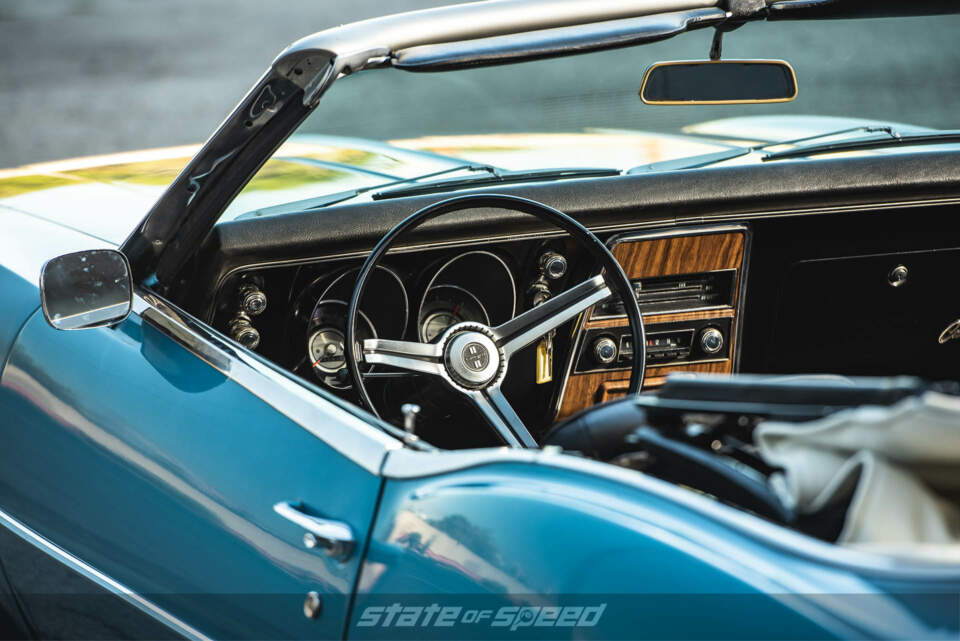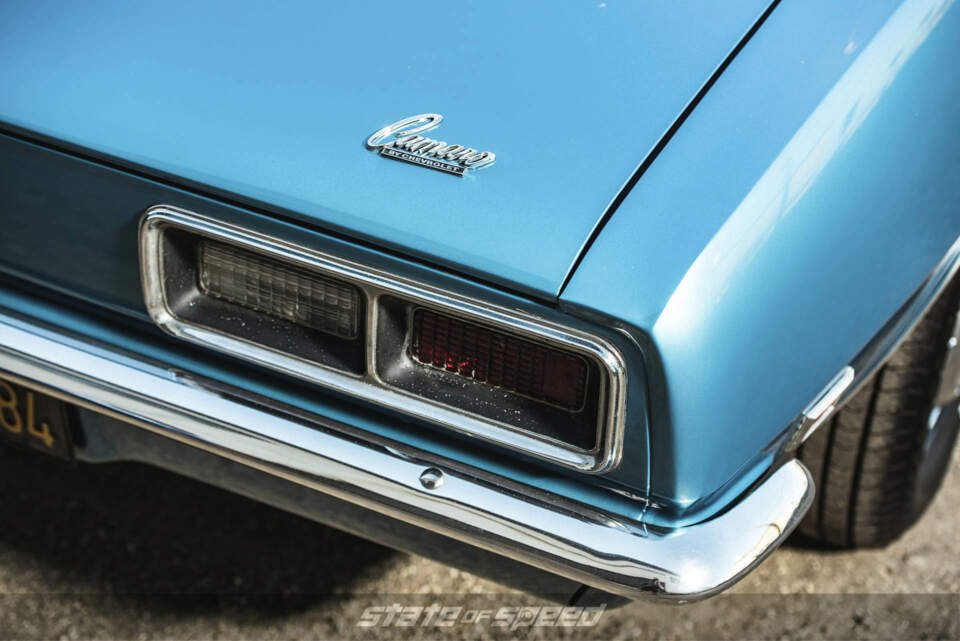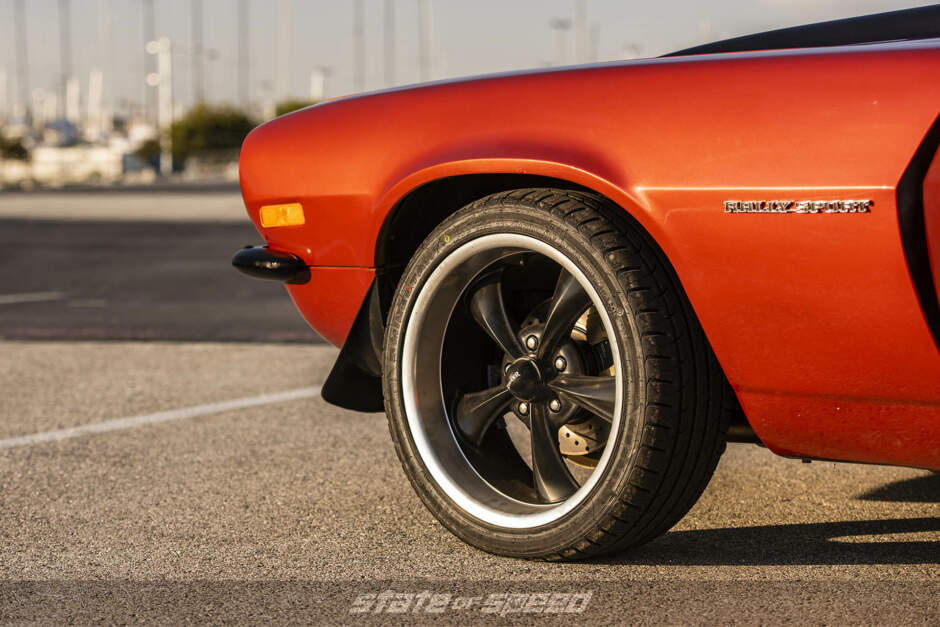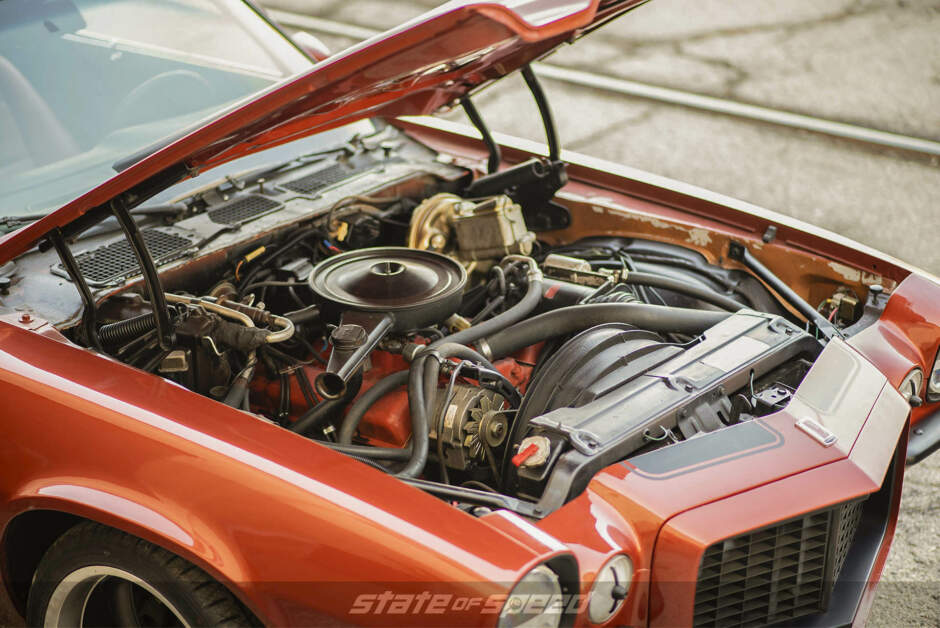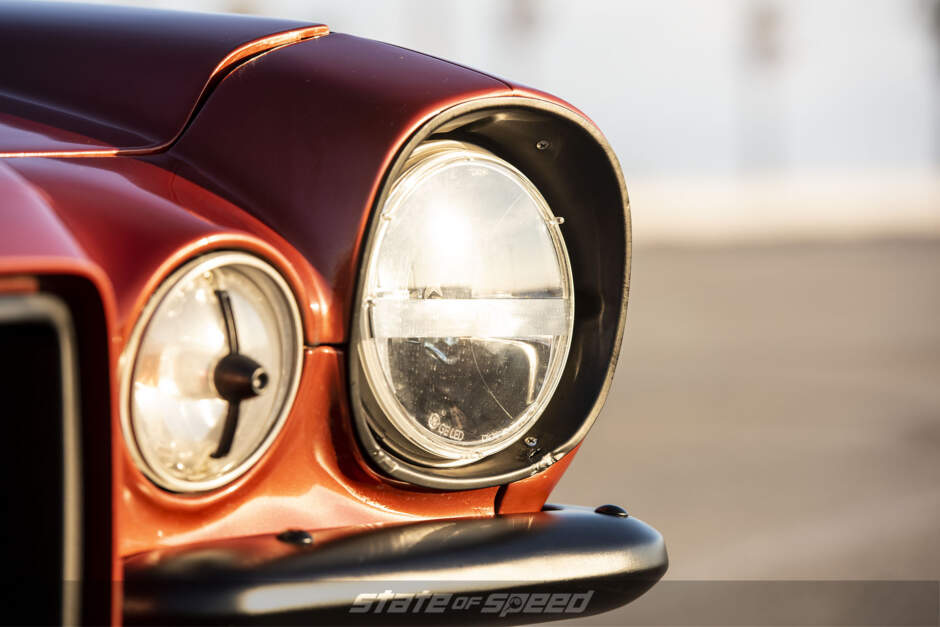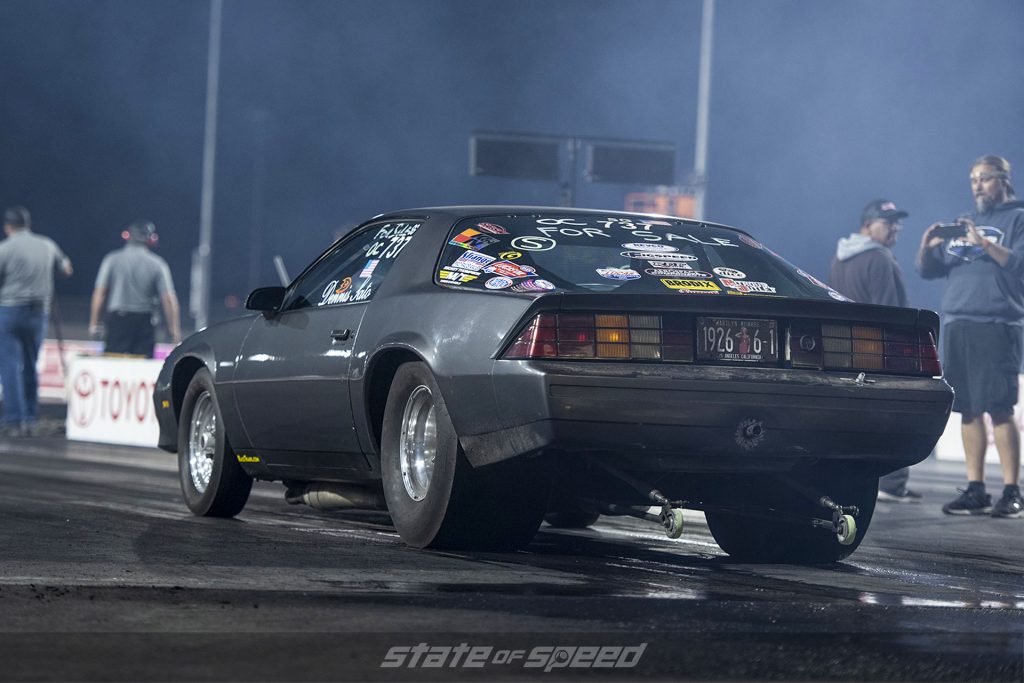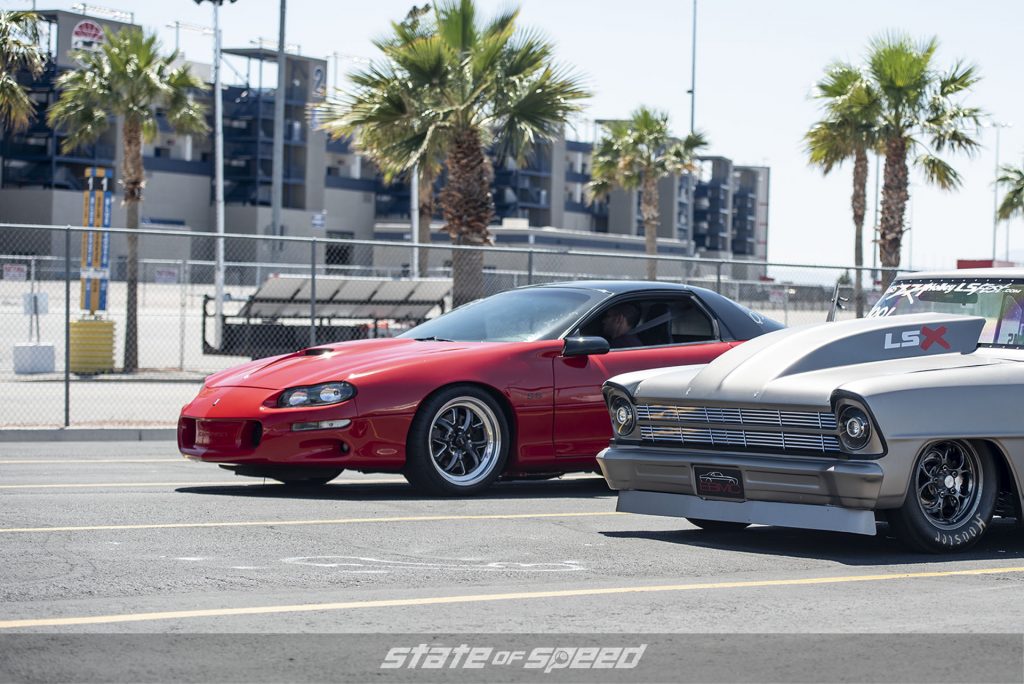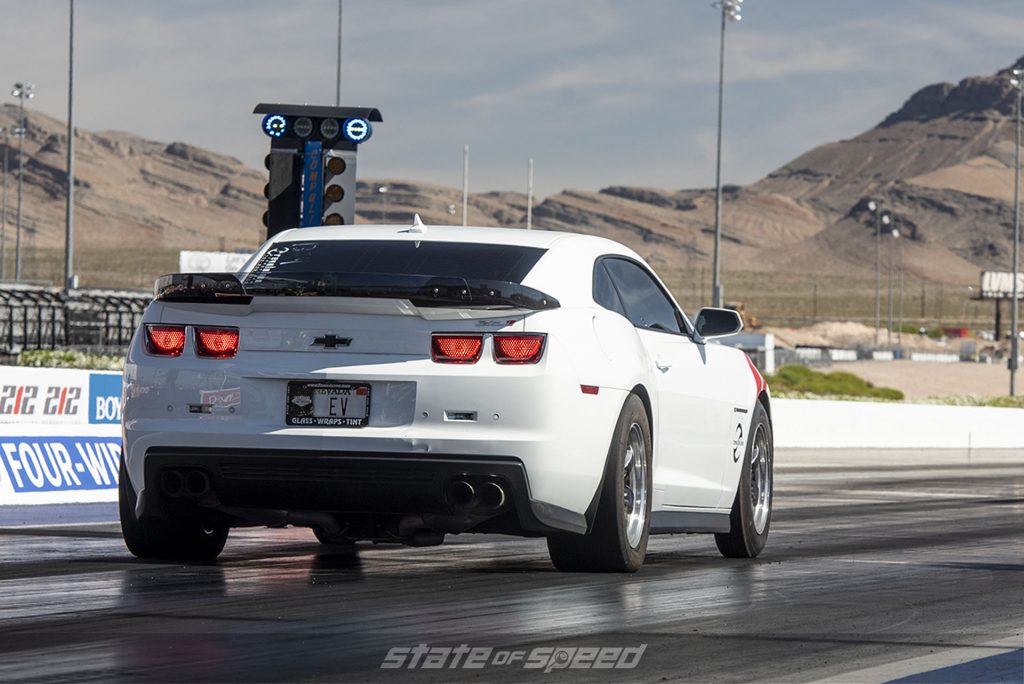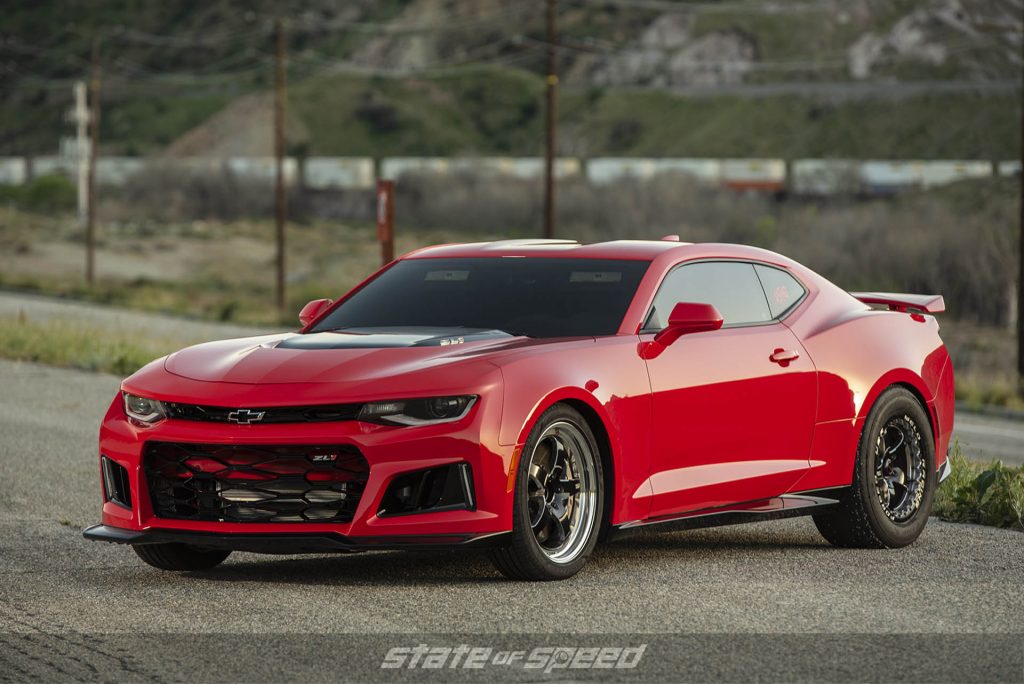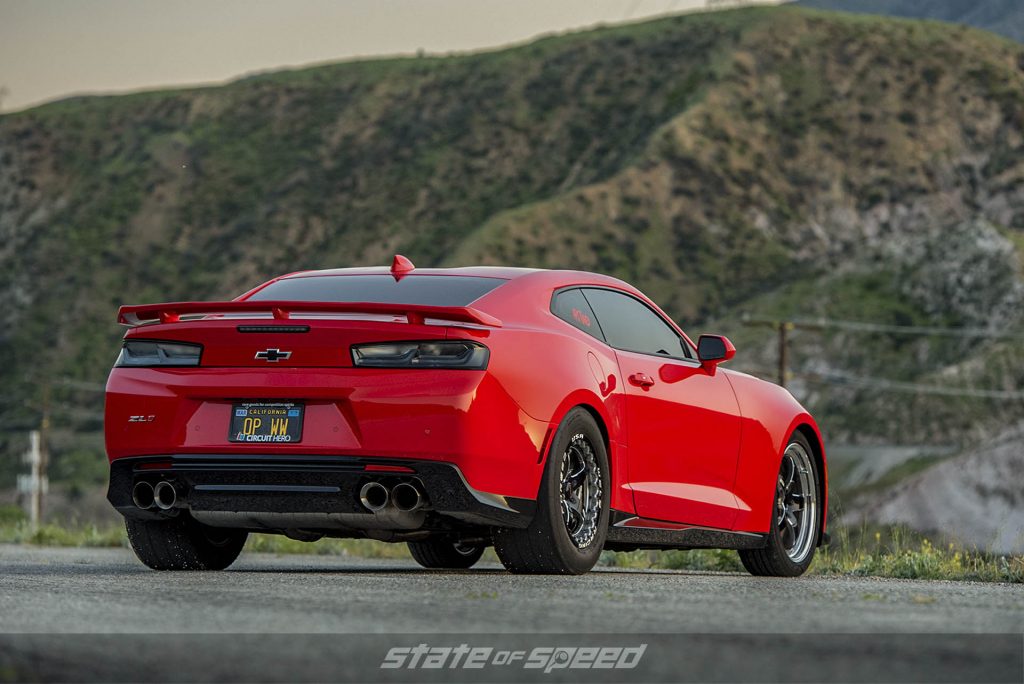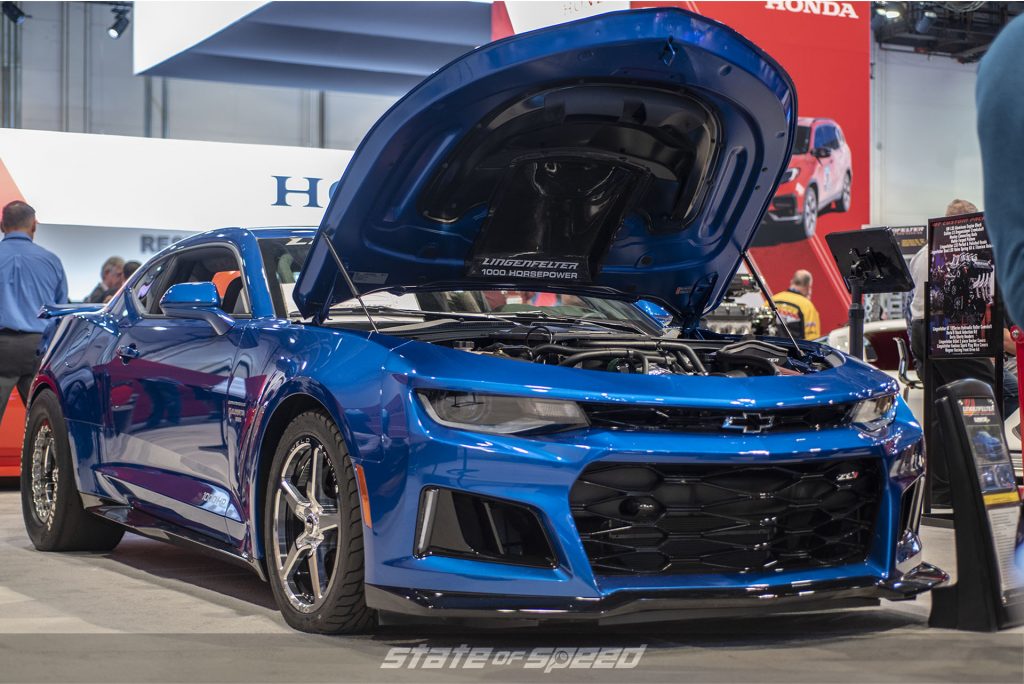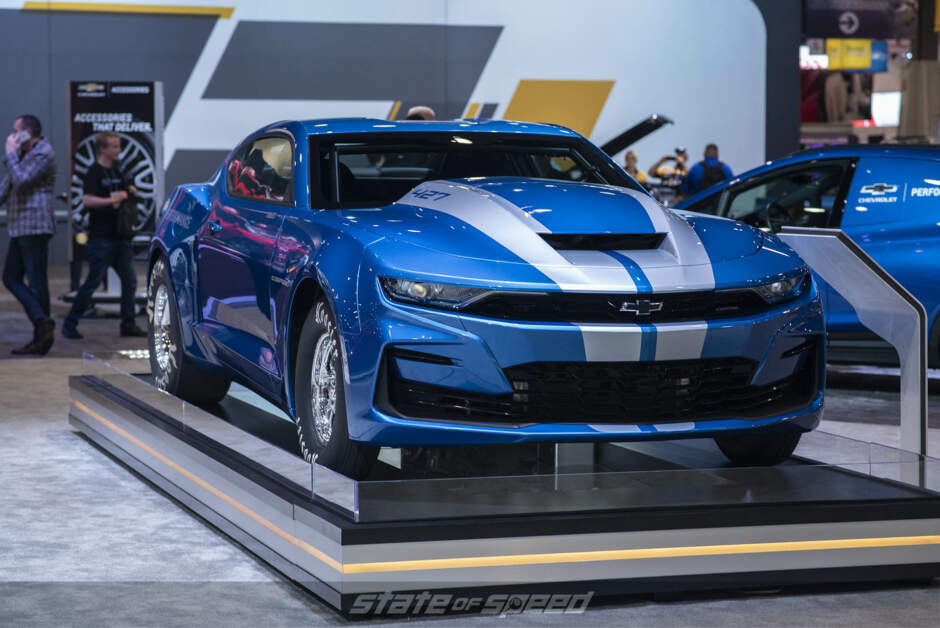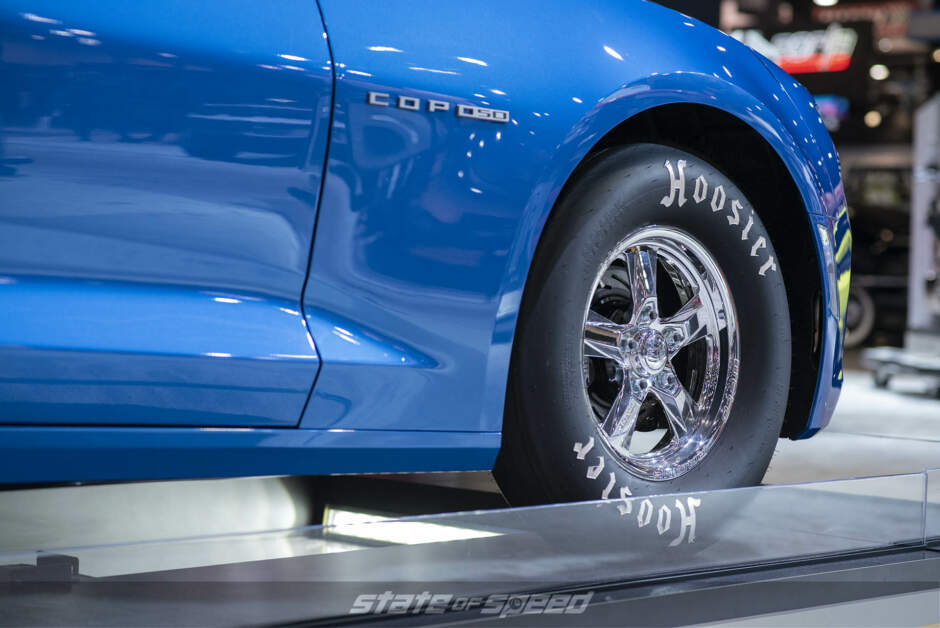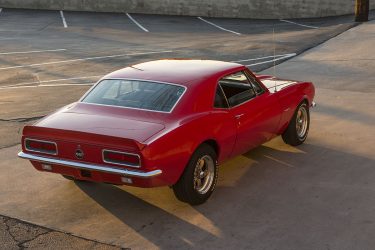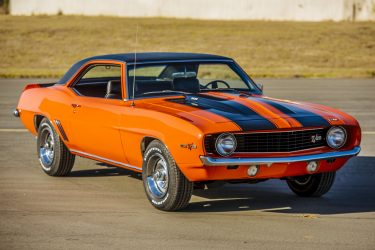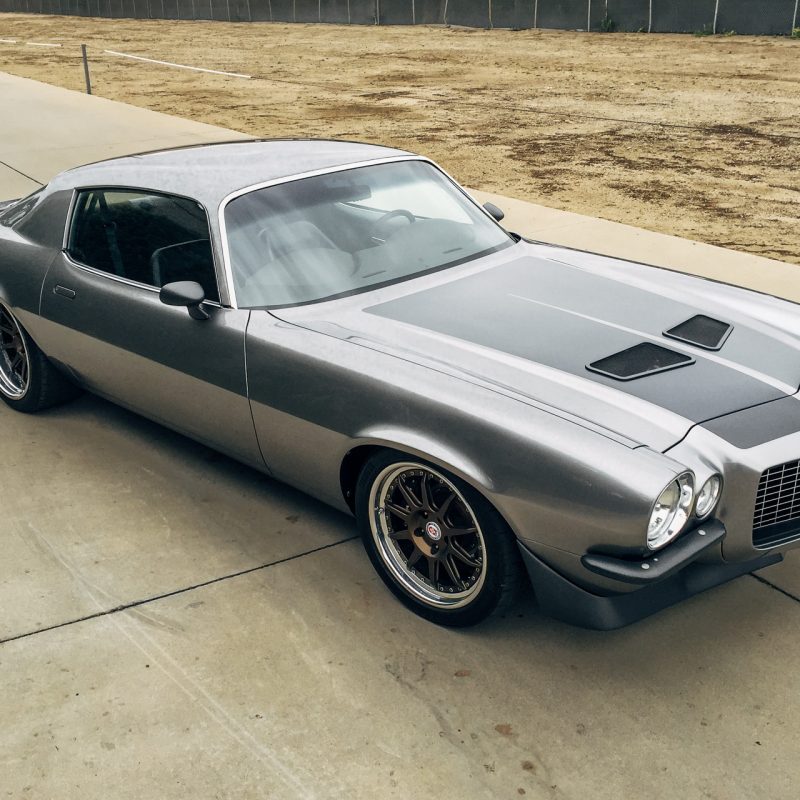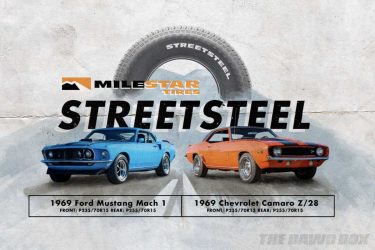The Camaro Story
1967–Present
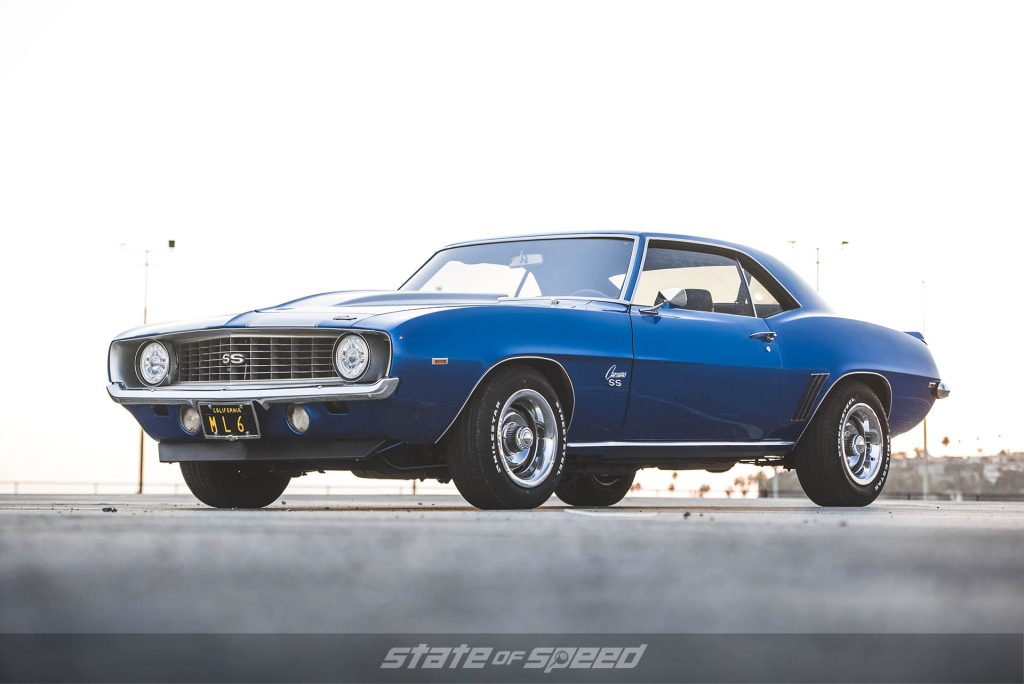
Tires: Milestar Streetsteel
GEN I 1967–1969
You can trace the history of the muscle car back to 1949 when GM’s Oldsmobile division dropped their new 135 hp ohv 303 ci V8 into a lightweight body. They called it the Rocket 88 and it rocketed Olds to the top of the NASCAR tree with six wins out of nine late-model division races in 1949. The Rocket 88 had such an impact that in 1951 Jackie Brenson and Ike Turner penned the hit song Rocket 88 and inadvertently gave birth to Rock and Roll. It went to #1 on the Billboard R&B chart.
…the name Camaro was reportedly derived from Heath’s French English Dictionary as a term that translated to “friend” or “comrade.”
Fast forward to the early sixties and the youth revolution. Suddenly, kids had spending money, the disposable income they called it, for things like music, movies, clothes, and automobiles. Ford may have been on the ball faster than GM though it wasn’t something you’d expect from the staid ol’ Ford Motor Company; nevertheless, they answered the call of the youth market before GM with the 1964-1/2 Mustang. The Mustang took the market by storm selling 1.5 million cars in the first three years.
It caught GM on the back foot and it took until the ’67 model year for them to retaliate with the Camaro. Introduced on Sept. 29, 1966, the Camaro was originally codenamed ‘Panther’ but Automotive News says the name Camaro was reportedly derived from Heath’s French English Dictionary as a term that translated to “friend” or “comrade.” We checked this with French friend Phillipe Dahn of Frog Specialties and he has never heard of such a word in French. GM product managers also told reporters that the term also meant “a small, vicious animal that eats Mustangs.” And the stage for the ongoing rivalry was set.
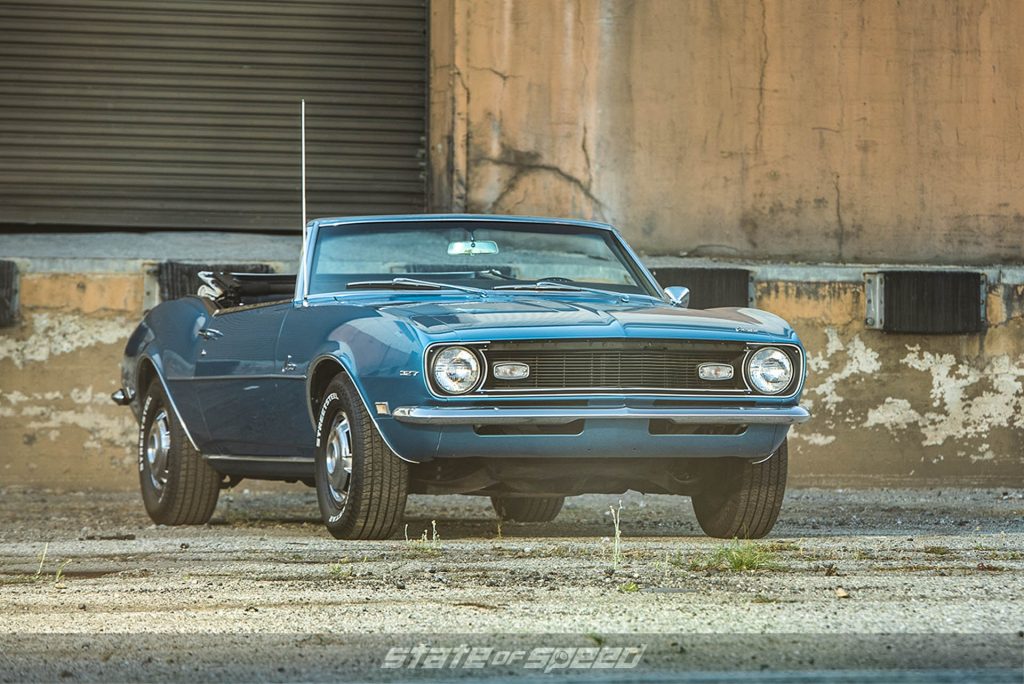
Tires: Milestar Streetsteel
Described as being long of hood and short of deck, the rear-wheel-drive Camaro was built on GM’s F-body platform and was available only as a coupe or convertible with 2+2 seating. It was available with nearly 80 factory options and 40 more dealer options. The base engine was a 140 hp 230 ci six-cylinder but you could get almost any engine that Chevrolet made all the way up to the 375 hp 396 ci in the Camaro SS version. The Camaro SS was also available with a 350 ci engine.
Sales were brisk but not Mustang brisk and Chevy sold only 220,906 in 1967 when Ford sold 472,121 Mustangs. Nevertheless, the Camaro paced the ’67 Indy 500 and to commemorate this Chevy built 104 Pace cars. Chevy also offered the Z/28 ‘Special Performance Package’ so that they could be eligible for SCCA Trans-Am racing. The package included a special 302 ci V8 with solid lifters, Muncie 4-speed trans, heavy-duty radiator, special suspension, dual exhaust, 15×6 in wheels, 3.73:1 Positraction rear axle, power-assisted front disc brakes and a special ‘skunk’ stripe package. Only 602 Z/28s were produced in 1967 making them extremely rare and valuable.
Sales were brisk but not Mustang brisk and Chevy sold only 220,906 in 1967 when Ford sold 472,121 Mustangs.
All U.S. Camaros were built either in Norwood, Ohio, or Van Nuys, California. However, cars were also built overseas in the Philippines, Belgium, Switzerland, Venezuela, and Peru. I wonder how many survivors there are in those countries?
At the top of the Camaro Gen I tree was the COPO 9560 ZL1. In 1969, two Central Office Production Orders (COPO), numbers 9560 and 9561, were offered as the result of some dealers, notably Canonsburg, Pennsylvania’s Yenko Chevrolet, installing 427 ci engines in Camaros despite GM forbidding dealers installing engines bigger than 400 ci.
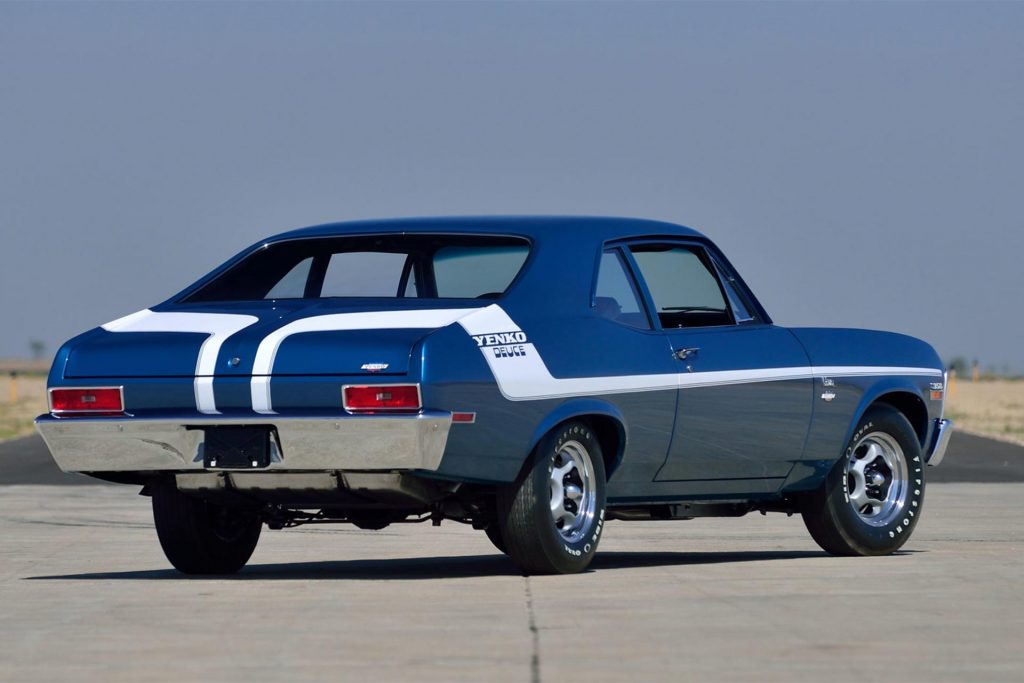
COPO 9561 used the solid-lifter L72 427 that made 425 hp and 460 lb-ft of torque. Yenko ordered 201 of these to create the legendary Yenko Camaro. Apparently, in total there may have been as many as 1,000 Camaros fitted with L72 engines. Conceived and designed for drag racing by Dick Harrell, the COPO 9560 used an all-aluminum, hand-assembled ZL-1 427 rated at 430 hp with 450 lb-ft of torque. Only 69 ZL-1 Camaros are supposed to have been built.
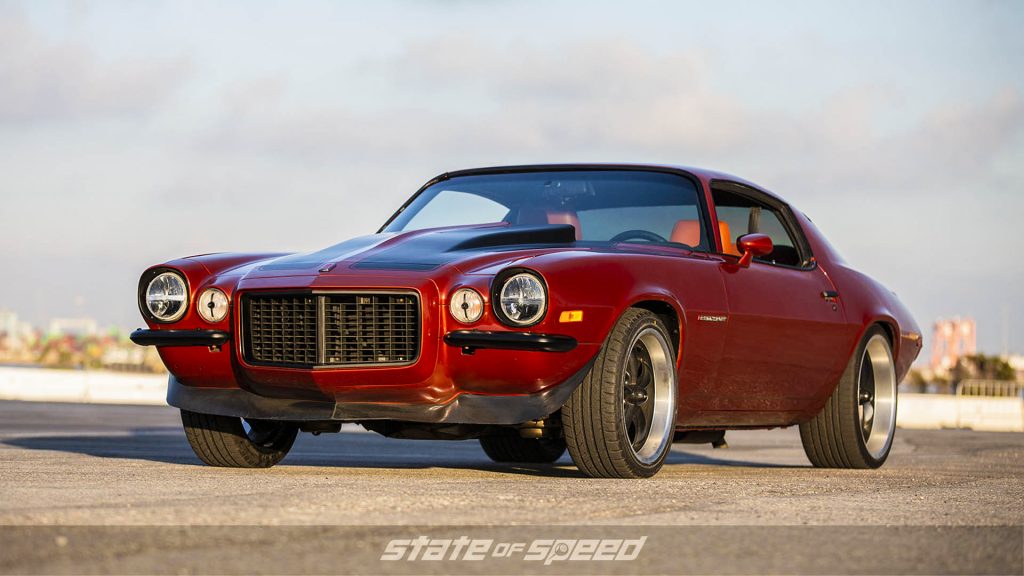
Tires: Milestar MS932 XP+
GEN II 1970–1981
The Gen II Camaro was unveiled on February 26, 1970, and while it retained its F-body platform with uni-body construction, 2+2 seating and general engine family its styling was a radical departure from Gen I despite the retention of the long hood, short deck architecture.
The new [Gen 2] Camaro was actually quite an aggressive, good looking car […] however, it did not sit so well with the public…
Apparently, GM designers looked to Europe for their styling queues. The grille, rather than being full width with integral headlights was now a pronounced pouty orifice with a distinctly European egg-crate insert flanked by split-bumpers and separate head and driving lights. It was said to borrow liberally from early-60s Ferrari designs even down to its twin round taillights.
The new Camaro was actually quite an aggressive, good looking car with a distinct sweep to the fender line, nicely flared wheel arches, slightly less chrome, no side vents, wider doors, however, it did not sit so well with the public who only purchased 124,901 examples when Mustang sold 191,239. In 1971, it fared even worse due to a two-month worker’s strike at the Norwood, Ohio, plant—the only plant now building Camaros. Sales were even worse at 114,630.
Unfortunately, even more, problems faced GM and new emissions and safety standards were introduced and the first fuel crises were on the horizon and insurance rates were rising. There was even talk in 1972 of canceling the Camaro altogether when sales plummeted to just 68,651 units.
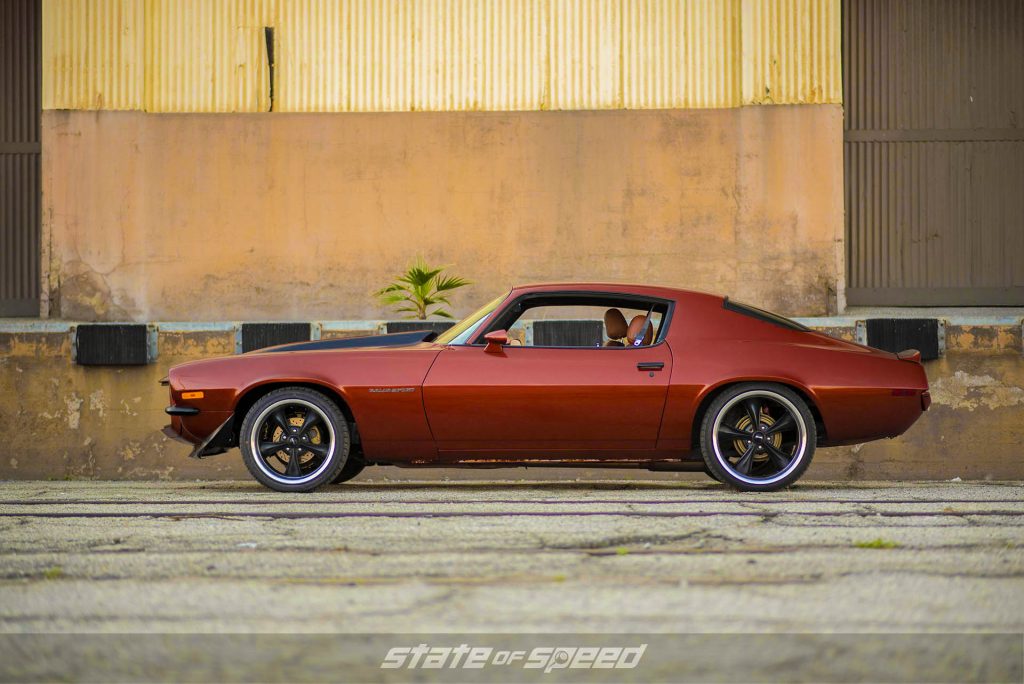
Tires: Milestar MS932 XP+
There was a major change in the engine line up as there were now only seven rather than 10 options. A 3.8L V-6 was added; all the small V-8s were eliminated as was the brutish 427. Nevertheless, consolidation made sense especially in light of the looming fuel crisis when members of OPEC, Organization of Arab Petroleum Exporting Countries, proclaimed an oil embargo. The embargo lasted just six months by which time the price of gas had quadrupled. A recession and another oil crisis would not help the Camaro’s sales, nevertheless, the Gen II Camaro survived more or less unchanged for 11 years until 1981.
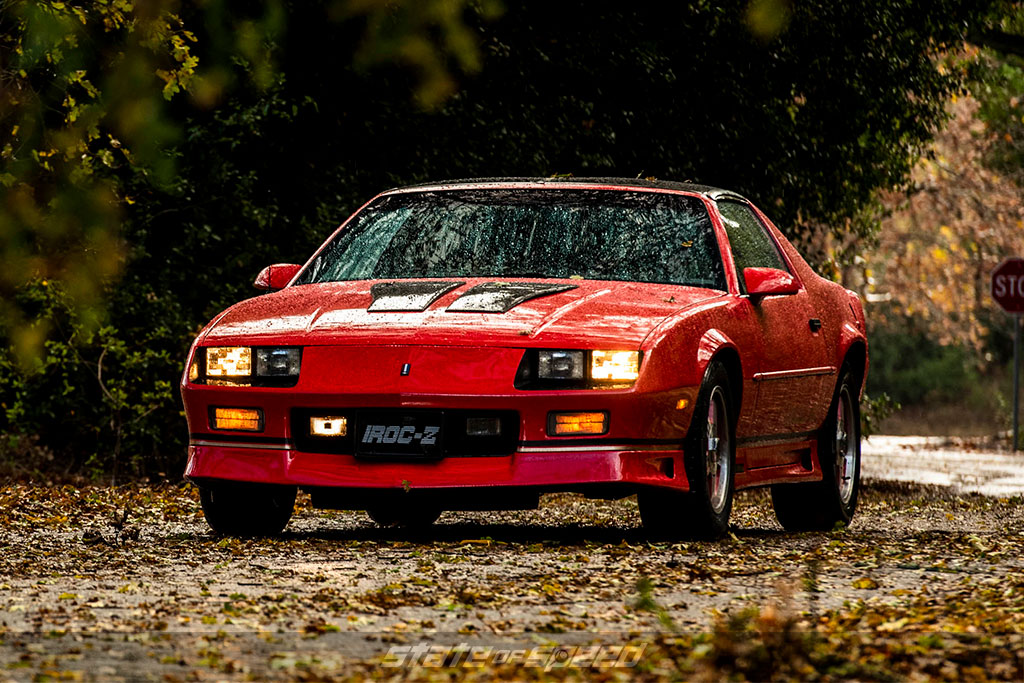
Tires: MS932 Sport
GEN III 1982–1992
As we have seen, the turbulent seventies caused Detroit all sorts of upset. Their business model had been to build big, gas guzzling cars that remained unchanged for years save for some additional accessories. After the recession, the oil crises and market attack from imports, things would never be quite the same.
This was the era of factory fuel injection, four-speed automatics, and five-speed manuals—all in the name of Corporate Average Fuel Economy standards.
Some things don’t change though and the third generation Camaro retained the trusty F-body platform with coils up front and leaf (buggy) springs in the rear. And now, because oil prices would never be the same, the engine line-up included a 2.5L four cylinder, the so-called ‘Iron Duke,’ and three V6s. There were now only two V8 options, the 305 and the 350. Long gone were the heady days of 396 or 427 cubic inches. This was the era of factory fuel injection, four-speed automatics, and five-speed manuals—all in the name of Corporate Average Fuel Economy standards. Only 51-percent of buyers chose the V-8, the others, four- or six-cylinder models.
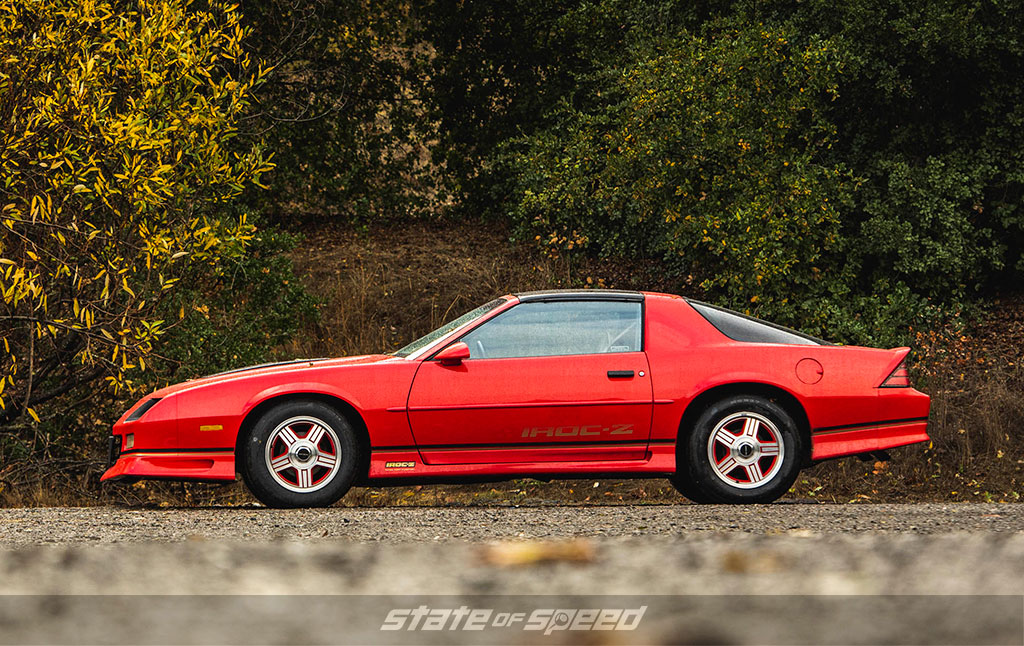
Tires: MS932 Sport
Designed by Jerry Palmer, the Gen III Camaro retained that long-nose, short deck configuration but with some differences. The windshield was raked back at 62 degrees; the first GM design to break their internal 60-degree edict. And in back, there was a European-style hatch back to access a cavernous cargo space when the rear seats were folded down.
It was quite the different Camaro from previous generations and three models were available: Berlinetta, Sport Coupe and Z28. The Sport Coupe was actually the base model and came with 4, 6, or 8 cylinders; the Berlinetta started with the V6 but the 5.0L V8 was optional. The Z28, however, came standard with the 5.0L V8 that boasted a staggering 145 hp with a single 4bbl carb. Even with the optional LU5 twin Throttle Body ‘Cross Fire’ Injected 305 it only produced 165 hp and that lack of power in the Z28 was one of the criticisms leveled at this otherwise well received model.
Sales of the Gen III never set the world afire but as the year progressed the car got better.
There was a more powerful version built to pace the Indy 500 and although some 6,000 visually similar cars were sold, they did not come with the hopped-up 5.7L V8 of the pace car. Meanwhile, in Europe, a Z28E (E for Europe) was shown at the Geneva Auto Show with a 155 hp carbureted V8.
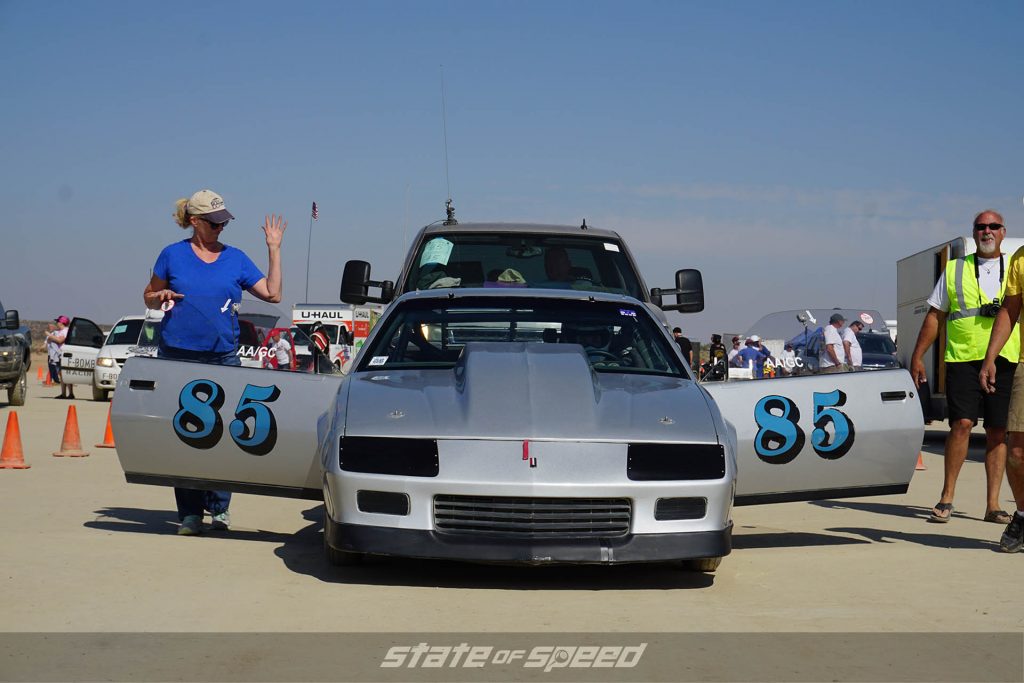
Sales of the Gen III never set the world afire but as the year progressed the car got better. In 1983, the Z28 got more juice with a 190 hp High Output 5.0L. The big news came in 1985 and the introduction of the IROC-Z named after the International Race of Champions. With tuned suspension and ‘Gatorback’ Goodyears, the IROC also benefitted from the Corvette’s TPI engine.
In 1987, for the 20th anniversary, Chevy had American Sunroof Corp., chop the top off and offered a convertible Camaro for the first time since 1969. It didn’t help much, sales were only 1007 units and production at Norwood, Ohio, was ended.
By 1988, another recession was looming and the Camaro line-up was reduced eliminating the LT model as well as the base Z28.
Approaching ten years, the Gen III was nearing the end of its life. To give it a little Viagra, the Rally Sport designation was re-introduced featuring a ‘ground effects’ body package. The top dog continued to be the IROC-Z 1LE supposedly tuned for SCCA Showroom Stock competition; however, despite its racecar pretentions apparently only 111 1LE-optioned Camaros were built. A total of only 34,986 Camaros were built in 1990 and the last Gen III was produced on December 31—it was the end of the line—so to speak.
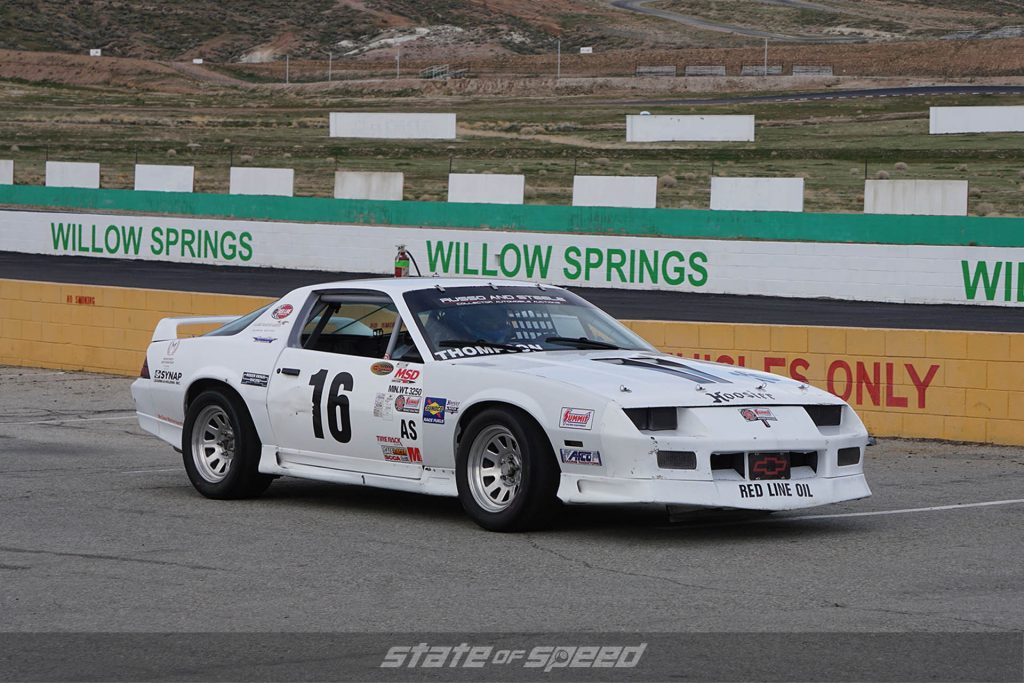
For 1991, the Camaro was given a shave and a haircut and all RS and Z28 models received a new body package, sadly, however, the IROC-Z had to be dropped because the Dodge Daytona was now the IROC car of choice. A new B4C option was introduced and this ‘Special Service’ read ‘Cop car’, edition rated the 350 ci engine at 245 hp at 4,400 rpm and 345 lb-ft or torque at 3,200 rpm.
The 25th anniversary 1992 Camaro was a bit sad because the Z03 ‘Heritage Package’ performance upgrades intended were nixed in favor of some badging and graphics. It was the last year for the Gen III and the last year for production in Van Nuys, CA, as production moved to Quebec, Canada.
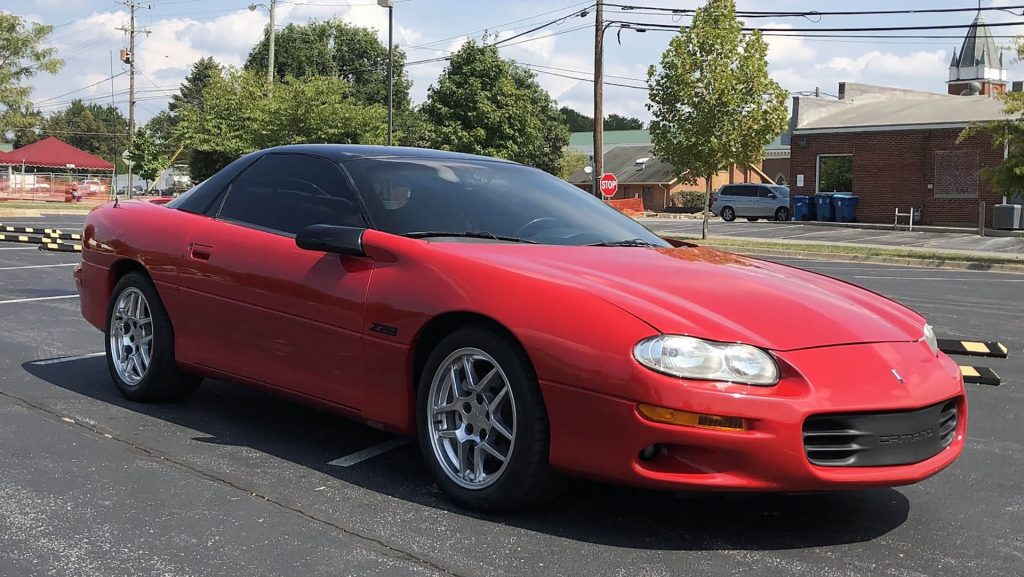
GEN IV 1993–2002
For anybody looking, a strong hint of the GEN IV Camaro had surfaced in January 1989 when Chevrolet unveiled the Chevrolet California IROC Camaro concept car at the Los Angeles Auto Show. Though still attached to the F-body platform, the body, tagged ‘cab-forward’ design was a radical departure created under design director John Schinella.
Concept cars don’t usually make it to production but the GEN IV looked an awful lot like the concept right down to the side mirrors that flared out from the tops of the front fenders. The big news was an all-plastic body except for the hood and the rear quarter panels.
Standard it came with a V6, first a 3.4L and then in ’95 a 3.8L. Standard for the Z28 was a multi-port fuel injected (MPFI) 350 ci LT1 that had first appeared in the ’92 ’Vette, however, there was an SS version available with the 330 hp LT4. 1993 also saw a police package while ’94 saw a six-speed manual and traction control for the Z28.
The infamous SS model was brought back in ’96 and it enjoyed 25 more hp than the Z28—much of this work was done by Ed Hamburger’s SLP Engineering. Another aftermarket outfit fettling the Camaro was Callaway and in 1994 they intro’d the ‘SuperNatural’ with a 404 hp LT1 and a dramatic body package. However, Doug Rippie Motorsports topped that with their 430 hp DRM.
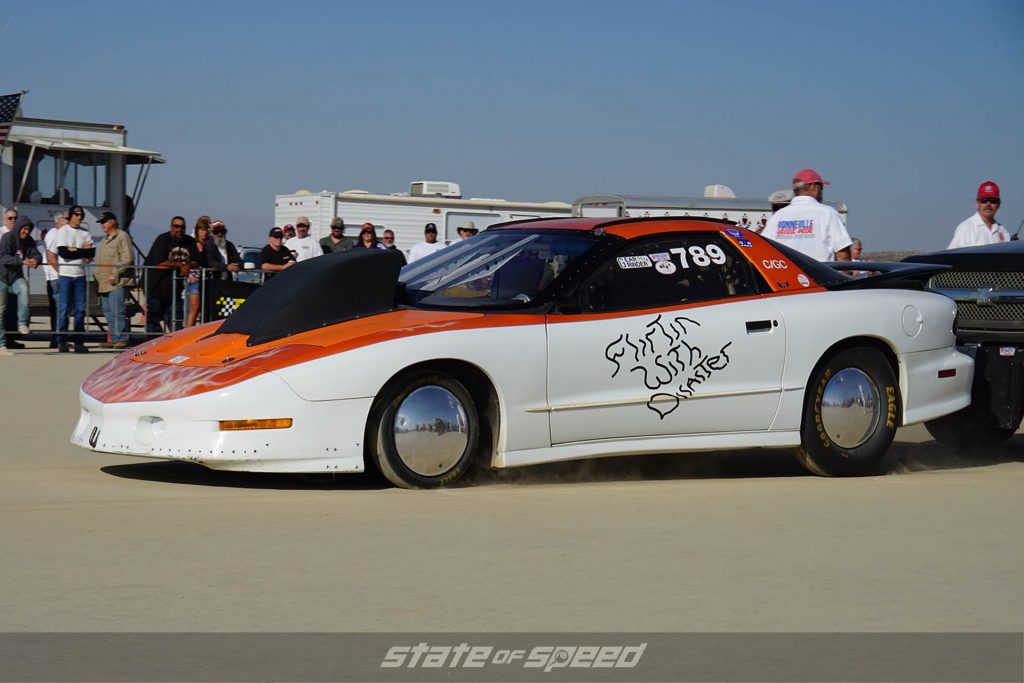
Things in Camaroland remained much the same until 1997-’98 when the car was given a facelift inside and out and under the new hood came a new all-aluminum 5.7L LS1 that had first appeared in the C5 Corvette introduced in 1995. With 300 hp, the LS1-powered Camaro became one of the fastest cars in its class. However, sales were inching down due to many factors not least of which was declining interest in two-door sport coupes. In 2001, Chevy sold only 29,009 Camaros. In 2002, Chevy offered a 35th anniversary trim package but the car was the same as it had been for the past two years and sales barely exceeded 40,000. It appeared that Camaro had had its day but Chevy had sold almost 4.4 million during its 35-year lifespan.
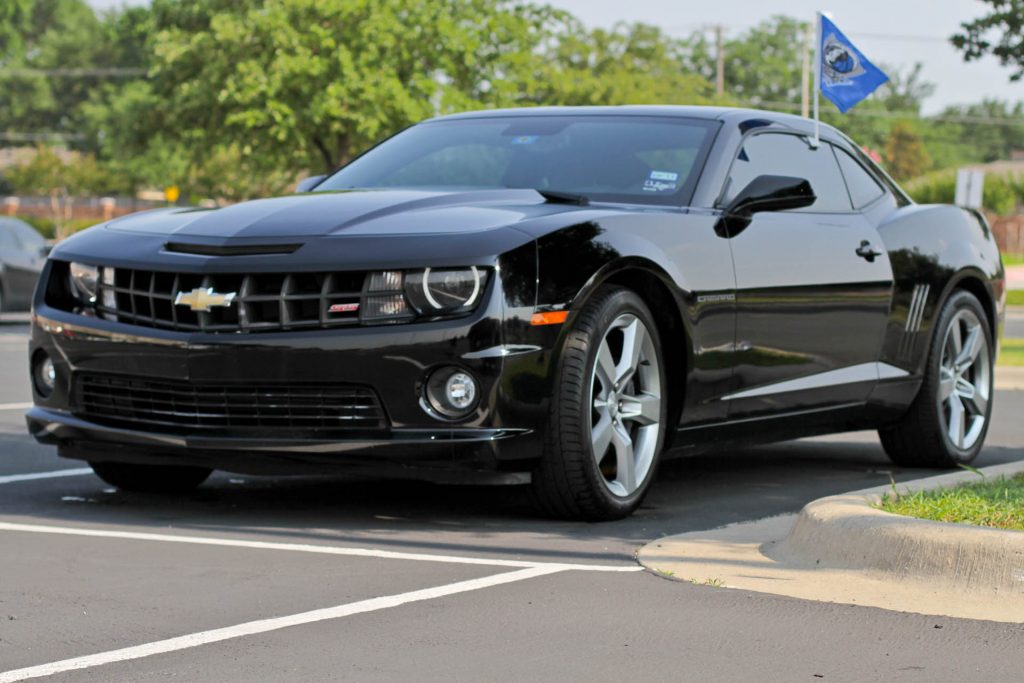
GEN V 2010–2015
Just as GM had been two years behind the Mustang they were caught on the back foot again when Dodge introduced the retro-styled Challenger in 2008 and it would be two years before GM brought the Camaro back in 2010. In my opinion, the exterior design wasn’t quite as clean at the Challenger but that’s just my opinion.
[the LSA powered Camaro] produced a staggering 580 hp and was the fastest Camaro ever built to date.
Gone, finally, was the F-body platform, replaced by a rear-wheel drive Zeta platform developed by GM’s Australian subsidiary Holden. The cars, however, were built in Oshawa, Canada. The base engine was a 312 hp 3.6L V6 backed by either six-speed manual or automatic transmissions. The top of the line Camaro SS was powered by a healthy 426 hp 6.2L LS3. It was apparent that the horsepower wars were back and over the next few years GM and Chrysler and even Ford would keep adding power to up the bragging rights.
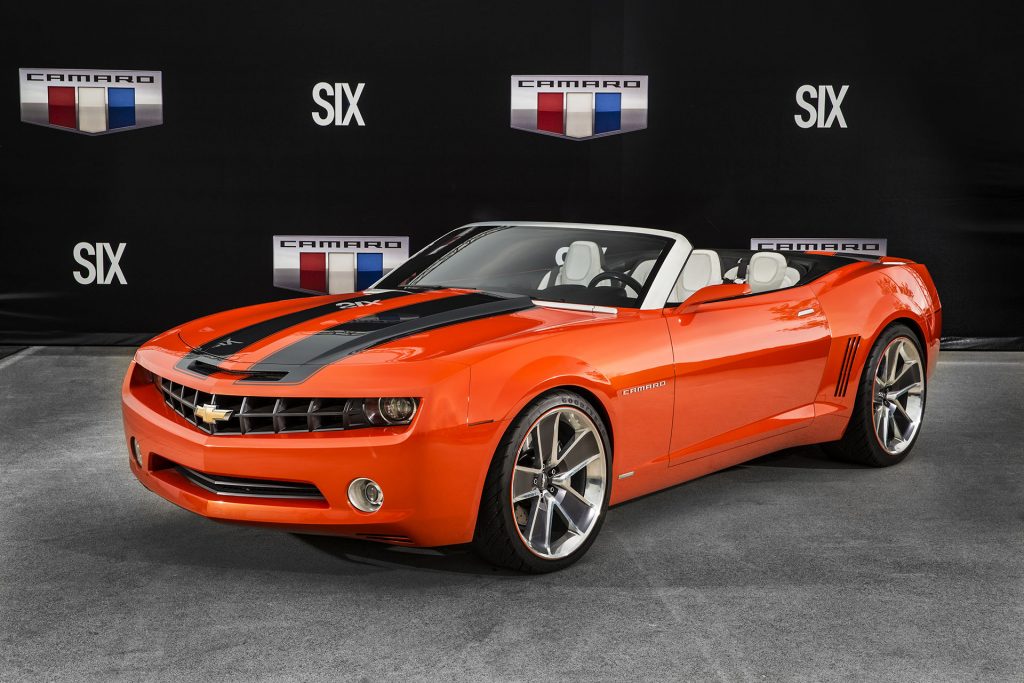
A convertible was added to the line in 2011 but the big news came in 2012 and the 45th anniversary when Chevy threw the 6.2L supercharged LSA first used in the 2009 Cadillac CTS-V into the ZL1. It produced a staggering 580 hp and was the fastest Camaro ever built to date.
In 2014, the Camaro was given a facelift with a new grille, taillights and the return of the Z28 featuring a 505 hp version of the C6 Corvette 7.0L LS7 engine—it was worthy of the Z28 moniker. To give the Z28 even more of an edge at the track it was put on a diet and weight was reduced where possible, even to the point of using thinner glass in the rear quarter windows. Sales reached their best since 1995 and a total of 86,297 for 2014. Mustang sold slightly fewer and unfortunately, sales would continue to decline.
GEN VI 2016–
Visually, the GEN VI Camaro is not that different from its predecessor, however, it was built on yet another new platform and weighed some 200 lbs less. This time it would be built on the Alpha platform and production had finally returned to the U.S. in 2015 and cars were built at the Lansing Grand River plant in Michigan.
For the first time since 1985, an in-line four cylinder was offered and with a turbocharger it produced a respectable 275 hp. A new 3.6L V6 produced 335 hp, the Camaro SS had a 6.2L 455 hp LT1 and the ZL1 version featured another supercharged LT4 producing a whopping 650 hp making it the most powerful factory-produced Camaro ever. Transmissions ranged from a six-speed manual to an eight-speed automatic and even a ten-speed auto option for the ZL1.
The race was on and for 2017 the ZL1 had a claimed top speed of 205 mph. Chevy engineers even took it to the infamous Nürburgring Nordschleife in Germany where the Camaro lapped the 12.93-mile track in just 7:16:4 minutes. Despite the accolades, the engineering and technical achievements, the public weren’t buying it and 2017 saw sales slip yet again to just under 68,000 units.
Unfortunately, 2018 would be even worse when sales slumped almost 20,000 units to a tad over 50,000. Mustang, on the other hand fared better with sales of more than 75,000.
At the 2018 SEMA Show, Chevrolet announced a 50th anniversary-themed 2019 COPO racecar that you could ‘apply’ to buy. Available only in metallic blue to emulate the original COPO Camaro, the 2019 COPO featured an exclusive grille and engine accessories to make it look like the original. Only 69 cars were to be built, the same number as were built in 1969.
Perhaps more interesting was the announcement, also made at SEMA, of an eCOPO concept developed in partnership with HancockandLane, North Bend, Washington. Entirely electric powered, eCOPO is driven by a pair of BorgWarner HVH 250-150 motor assemblies, each generating 300 lb-ft of torque providing the equivalent of more than 700 hp and 600 lb-ft of torque. Maybe it’s the future.
Over its lifespan, Chevrolet has sold more than 5.5 million Camaros and I guess that’s not all bad for a long-nose, short tail, niche vehicle.


